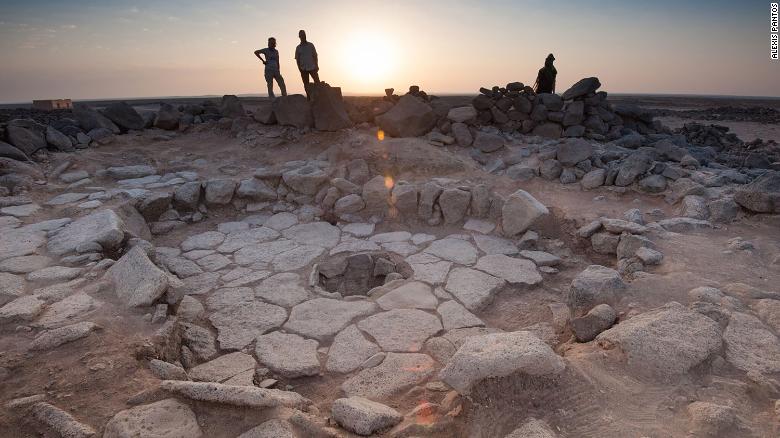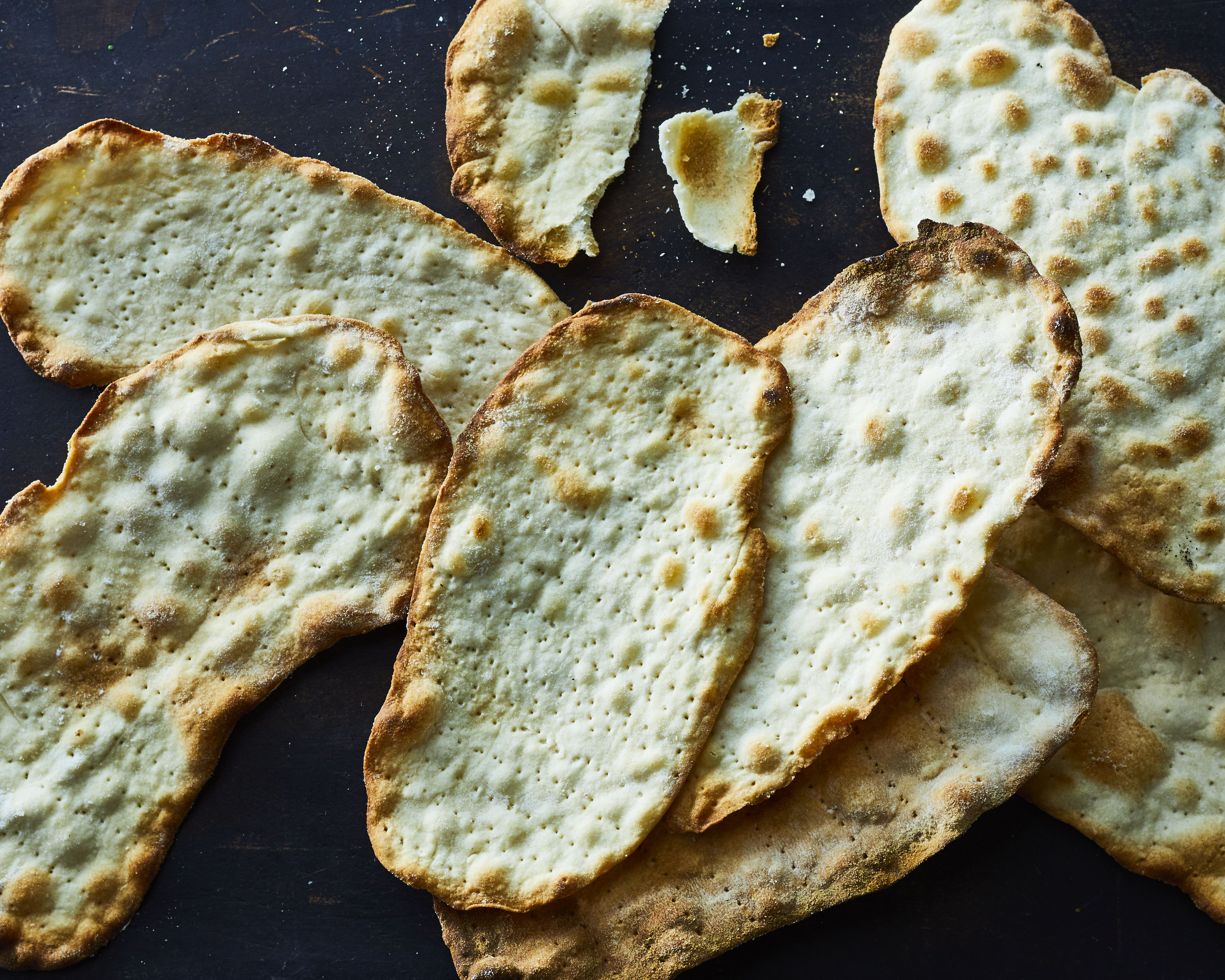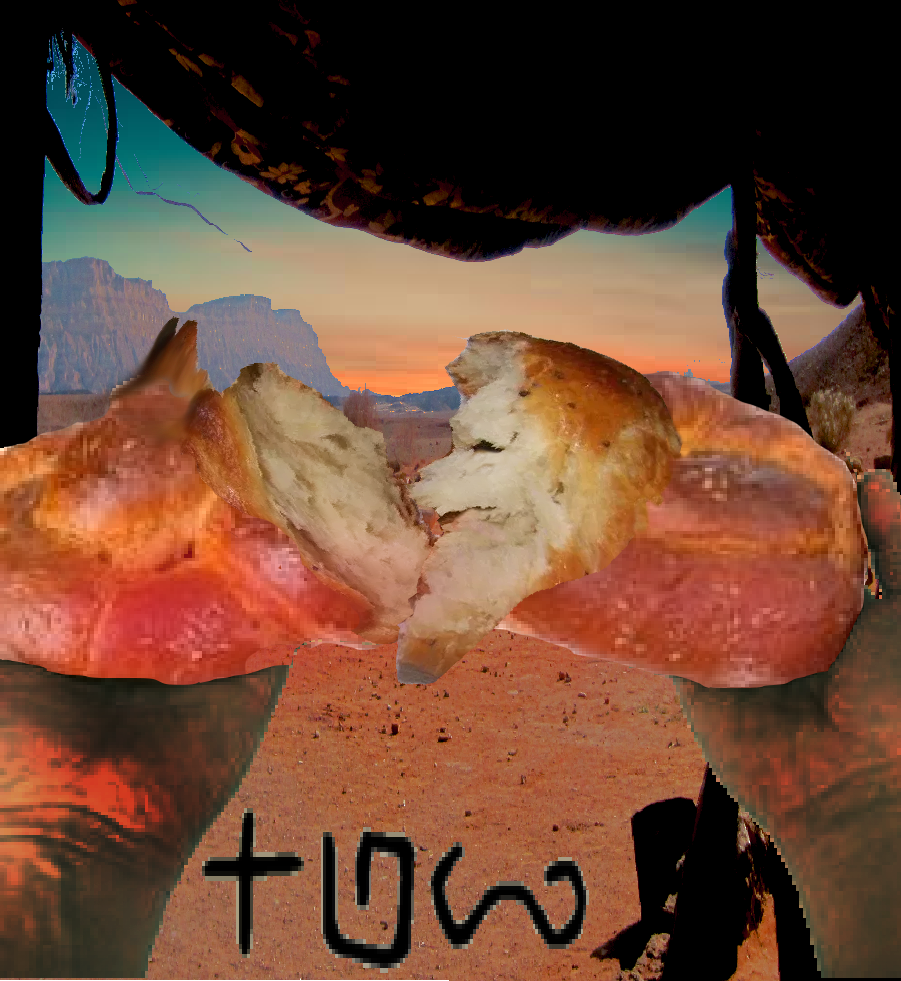“T
he presence of hundreds of charred food remains in the fireplaces from Shubayqa 1 is an exceptional find, and it has given us the chance to characterize 14,000-year-old food practices,” said
University of Copenhagen archaeobotanist Amaia Arranz Otaegui, the first author of the report, who is now on a dig in Iran.
The Epipaleolithic period bread was made of domesticated cereals and club-rush tubers, according to the study.\
Otaegui said she tasted the tubers they used, and “they were a little sweet and a bit salty and had a gritty texture, but maybe that’s because we didn’t clean them well enough.”
Previously, evidence of bread production was found in late Neolithic sites in Turkey and the Netherlands. The charred remains in Jordan are the first direct evidence that bread production preceded agriculture. Amaia Arranz Otaegui with assistant Ali Shokaiteer, sampling cereals in Shubayqa.
“Natufian hunter-gatherers are of particular interest to us because they lived through a transitional period when people became more sedentary and their

An ancient fireplace in what is now ordan
diet began to change,” said University of Copenhagen archaeologist Tobias Richter, who led the excavations.
The authors of the report noted that cereal-based foodstuffs were difficult to make. Hunter-gatherers may have considered them luxury foods “employed to impress invited guests and secure prestige for the hosts.”
“It is quite interesting,” said food technologist
Antonella Pasqualone, who did not work on this study but as a professor at the University of Bari specializes in cereal science and technology, and who has written
several studies on bread.
“Flat bread presents numerous advantages over ‘high’ and voluminous bread loaves, and in my opinion, a plausible hypothesis is that this kind of bread could be a perfect bridge between hunter-gatherers and stable farmers,” Pasqualone said.

Matzos, or its not dried out form, may have looked like these first breads. Hmm, I wonder if my Natufian ancestors used yeast?
Flat bread doesn’t need a large oven, but it “could be baked simply by covering by sand and embers or by laying down the dough on a metal or a terracotta plate placed on the fire,” she said. “Finally, flat breads could be easily transported with little encumbrance by stacking them on top of each other.”
“I think this offers a whole new perspective about the possibility of bread in this time period. The evidence is quite convincing,” said Patrick McGovern, scientific director of the Biomolecular Archaeology Laboratory for
Cuisine, Fermented Beverages, and Health at the University of Pennsylvania Museum of Archaeology and Anthropology in Philadelphia.
Otaegui said she hopes to work with some modern chefs to try to make the ancient recipe. “Bread is such an important staple, but it also has this additional powerful place in contemporary culture with links to religion and important ceremonies. Finding this link for us to the past and our ancestors was the last thing we expected to find, but it was a good surprise for sure.”
 Every Shabbat, Jews break a challah. Like many Jewish traditons, no one know how old this might be. For that matter we do not even know when Jewish identity first appeared among the indigenous peoplw of what later became Canaan.
Every Shabbat, Jews break a challah. Like many Jewish traditons, no one know how old this might be. For that matter we do not even know when Jewish identity first appeared among the indigenous peoplw of what later became Canaan.
